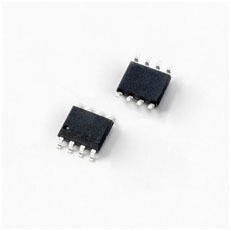Known-good solution to protect sensitive PHY chips from damage due to ESDs and lightning-induced surge events
Beijing, China, October 31, 2018 – Littelfuse, Inc., today introduced the first of a series of TVS Diode Arrays (SPA® Diodes) designed to protect two lines of 10/100/1000BaseT Ethernet ports from damage due to sustained overcurrent and overvoltage. Through-package routing permits the SP4031 Series Hybrid Protection Module’s circuitry to protect an Ethernet PHY chip from damage due to events such as electrostatic discharge (ESD) and lightning-induced surge.
During a prolonged overvoltage event such as a power fault, this component will present a high impedance. The high impedance state will reset once the power fault event has ended. During a fast transient event, the component will clamp, thus protecting any downstream chipset from surge or ESD damage.

The SP4031 Series’ low loading capacitance (just 2.5pF per I/O) and high surge handling capability (up to 35A) make it ideal for protecting Ethernet and other high-speed data interfaces. Typical applications for the SP4031 Series Hybrid Protection Module include 10/100/1000BaseT Ethernet, (ITU K.21 Basic level compliance), as well as integrated magnetics, or ADSL/VDSL/G.fast modem, and Industrial Ethernet and smart TVs.
“The SP4031 Series Hybrid Protection Module combines some of the best products from our Electronics Business Unit with some of the best products from our Semiconductor Business Unit to create a hybrid, known-good solution for the Ethernet protection designer,” said Tim Micun, Business Development Manager, TVS Diode Arrays (SPA® Diodes) at Littelfuse. “Its’ fast response protects Ethernet and other high speed interfaces faster, which means protecting better, because long-term exposure to overvoltage or overcurrent shortens chip life.”
The SP4031 Series Hybrid Protection Module offers these key benefits:
- Known-good design for overvoltage and overcurrent events provides a proven turnkey solution for protecting Ethernet PHY.
- Through package routing, low breakdown voltage and low parasitic capacitance produce a device that performs well at Ethernet speeds up to 1000 Mbits.
- During a high current event, creates a temporary high impedance which interrupts the flow of the signal lines and damage to the PHY chip.






